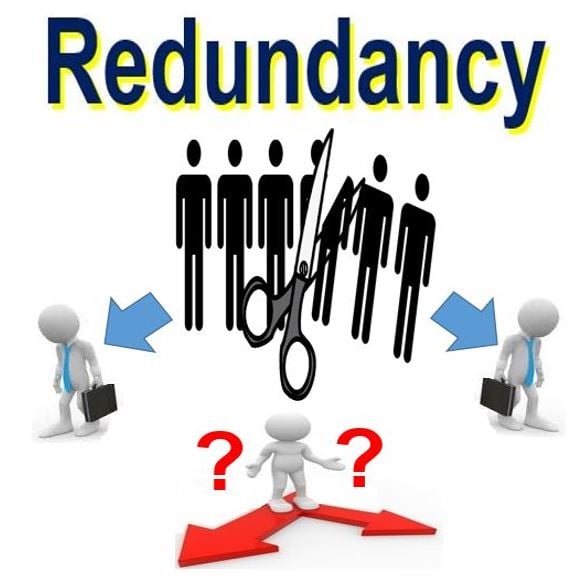Who Pays Redundancy Money? Comprehending Company Obligations in the UK
Who Pays Redundancy Money? Comprehending Company Obligations in the UK
Blog Article
Examining the Interaction In Between Company Redundancy and Business Versatility for Future Development
In the vibrant landscape of today's service world, the complex relationship between company redundancy and organizational adaptability emerges as a vital element for sustained development and success. Companies typically encounter the challenge of striking a fragile balance in between keeping a level of redundancy to mitigate dangers and cultivating versatility to react swiftly to the ever-evolving market demands.
Value of Company Redundancy
Business redundancy is a critical aspect that boosts business durability and reduces functional risks. By including redundancy actions within the business framework, companies can much better withstand unanticipated disturbances and variations in the business atmosphere. Redundancy works as a calculated buffer, enabling business to adjust and react effectively to unanticipated difficulties without endangering essential operations.
One secret aspect of the importance of business redundancy is its function in making certain connection during times of dilemma. When encountered with unexpected adjustments or emergency situations, repetitive systems, resources, or workers can step in to preserve essential functions and avoid widespread disruptions. This continuity not only safeguards the business's reputation and client count on but also reduces economic losses and functional downtime.

Techniques for Business Flexibility

Producing versatile organizational frameworks that permit for quick changes to market characteristics and customer demands is crucial for remaining competitive in a quickly developing atmosphere. By proactively determining possible disturbances and chances, organizations can proactively grow and adjust in an ever-changing organization landscape.
Harmonizing Redundancy and Adaptability
Accomplishing a harmonious balance between functional redundancy and business versatility is paramount in browsing the complexities of a vibrant service environment. Striking the best balance in between redundancy and flexibility is a delicate procedure that needs a deep understanding of the organization's objectives, market characteristics, and threat tolerance.
To attain this balance, firms need to perform normal assessments of their operations to determine areas where redundancy is required for danger reduction and where versatility can drive advancement and growth. Applying flexible structures, promoting a society of look at this site continuous knowing and enhancement, and motivating open interaction across all levels of the organization are key strategies to integrate redundancy and flexibility properly. By aligning these 2 essential components, firms can place themselves for sustainable development and success in an ever-changing business landscape.
Case Studies on Adjustment Success
In taking a look at instances of effective organizational adjustment, it comes to be evident that the interaction between operational redundancy and flexibility is a defining variable in forming resistant services. A DVD rental solution, Netflix showed impressive versatility by transitioning into a streaming platform when digitalization disrupted the industry. These situation studies emphasize the significance of functional redundancy combined with organizational flexibility in cultivating long-lasting development and competition.
Structure Strength for Future Development
Structure strength for future development calls for a calculated alignment of functional procedures with market characteristics and arising patterns. Business have to adjust to changing settings by cultivating a culture of adaptability, technology, and continual improvement.
Moreover, cultivating strong relationships with stakeholders, such as customers, staff members, providers, and the community, is crucial for preserving and weathering uncertainties depend on and assistance throughout rough times. Effective interaction and openness play an essential role in building durability, as they aid help with and straighten expectations partnership in navigating unpredictabilities.
Moreover, organizations need to focus on knowing and development efforts to upskill employees and outfit them with the required devices to adjust to transforming scenarios. By investing in their workforce, business can improve their adaptability and dexterity, ultimately strengthening try these out their durability for lasting future growth.
Verdict

In the dynamic landscape of today's organization world, the complex connection in between business redundancy and business adaptability arises as an important element for continual development and success. Companies frequently encounter the difficulty of striking a delicate equilibrium between keeping a degree of redundancy to mitigate threats and fostering adaptability to react promptly to the ever-evolving market demands.To achieve this balance, companies need to conduct routine assessments of their procedures to determine areas where redundancy is necessary for threat mitigation and where flexibility can drive development and development.In conclusion, the interaction between company redundancy and business versatility is critical for future growth. Building durability with a mix of redundancy and adaptability will ensure that companies are prepared for the obstacles of the future.
Report this page